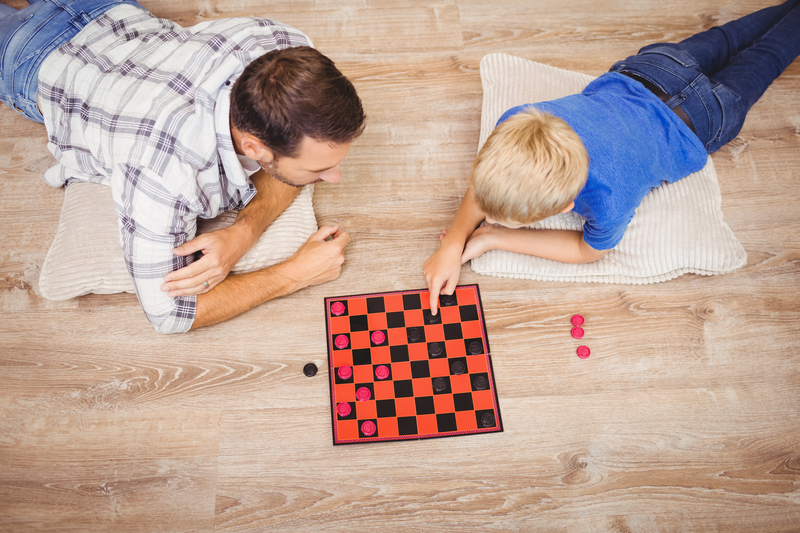Mastering Room Clearance
Posted on 22/08/2025
Mastering Room Clearance: An Essential Guide
Room clearance is a critical skill in various situations, from military operations and law enforcement to home defense and personal preparedness. Effectively clearing a room requires proper technique, focus, and practice to ensure safety and success. In this article, we will delve into the nuanced art of room clearance, covering essential tactics, strategies, and considerations. Whether you are a professional or simply looking to boost your self-protection skills, mastering room clearance is invaluable.
Understanding Room Clearance
Room clearance involves systematically entering and securing a room to neutralize potential threats, ensuring the area is safe. It combines situational awareness, quick decision-making, and tactical skills. Situational awareness is the foundation, as it involves constantly assessing your environment and identifying potential threats or obstacles.

Basic Principles of Room Clearance
Before diving into advanced techniques, it is essential to understand the basic principles that guide all room clearance operations:
- Preparation: Thorough planning is crucial. Understand the layout of the building, potential entry points, and escape routes. Solid preparation increases the odds of a successful clearance.
- Teamwork: Room clearance is rarely a solo endeavor. Working as a cohesive team, with clear communication and assigned roles, enhances effectiveness.
- Speed and Surprise: Moving quickly and catching potential threats off guard often means the difference between success and failure.
- Safety: Prioritize the safety of yourself and your team. Avoid unnecessary risks and always wear appropriate protective gear.
Techniques for Effective Room Clearance
The following techniques are essential for mastering room clearance:
1. Dynamic Entry:
Dynamic entry involves using forceful, rapid movements to enter a room, overwhelming any potential threats. It often includes using tools like battering rams or breaching charges to quickly gain access.
2. Pieing:
This method involves slicing the "pie" as you clear the room, visually breaking it into small sections and clearing each one methodically. By using careful angles, you minimize exposure to potential dangers.
3. Threshold Evaluation:
Before entering a room, evaluate the threshold - the doorway or entry point. Check for booby traps, sounds, or other signs of danger. This cautious approach prevents walking into a potentially hazardous situation blindly.
Advanced Room Clearance Tactics
Once basic techniques are mastered, advanced tactics can be introduced:
1. Flashbangs and Distraction Devices:
Utilize non-lethal devices like flashbangs to disorient and distract potential threats, providing a tactical advantage during entry.
2. Communication and Commands:
Clear communication with your team is paramount. Use hand signals or concise verbal commands to coordinate movements and maintain situational awareness.
3. Multi-room Coordination:
Clearing multiple rooms requires seamless coordination. Assign team members to cover different entry points simultaneously, ensuring a systematic approach to the entire building.
Pros and Cons of Mastering Room Clearance
As with any skill, mastering room clearance has its pros and cons:
Pros:
- Increased Safety: Effective room clearance significantly enhances personal and team safety during high-risk operations.
- Preparedness: Knowing how to properly clear a room prepares individuals for a range of potential scenarios, from active shooter situations to home intrusions.
- Skill Honing: Mastering room clearance hones valuable tactical, communication, and leadership skills.
Cons:
- High Risk: Even with proper training, room clearance involves inherent risks due to unknown factors and potential threats.
- Intense Training: Achieving proficiency in room clearance requires rigorous, ongoing training and practice.
- Resource Heavy: Proper room clearance often necessitates specialized equipment and multiple team members, making it resource-intensive.
Tips for Mastering Room Clearance
Consider the following tips to improve your room clearance abilities:
- Practice Regularly: Consistent, realistic training scenarios build confidence and proficiency.
- Stay Informed: Keep up-to-date with the latest tactics, technologies, and industry standards.
- Physical Conditioning: Maintain physical fitness to handle the demands of rapid movement and heavy equipment.
- Mental Preparedness: Cultivate a focused, alert mindset to quickly assess and respond to changing situations.

Key Takeaways
- Room clearance requires a blend of technique, teamwork, and situational awareness.
- Basic principles include preparation, teamwork, speed, and safety.
- Techniques such as dynamic entry, pieing, and threshold evaluation form the foundation of room clearance.
- Advanced tactics add layers of complexity and effectiveness to room clearance.
Conclusion
Mastering room clearance is an invaluable skill, particularly for professionals in law enforcement, military, and security fields. However, it is also beneficial for personal defense and preparedness. Through understanding basic principles, employing effective techniques, and practicing advanced tactics, individuals and teams can become proficient in clearing rooms safely and effectively. While it requires dedication and continuous training, the benefits of enhanced safety, preparedness, and tactical proficiency are well worth the effort.






